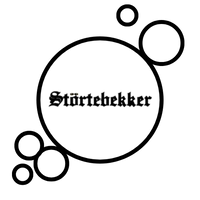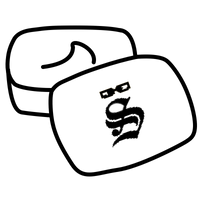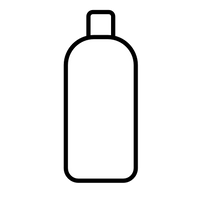Martin is a true entrepreneur and passionate about visiting barbershops. He has delved deep into the world of shaving and beard care and wants to bring the unique barbershop feeling into every bathroom.
Shaving rash is the dark side of shaving: Many people, especially many beard wearers, regularly struggle with it, not only after dry shaving. Itchy and painful redness and/or inflamed little pimples make the shaved area, which you actually want to shine, look unsightly - and can really spoil the shaving result for you!
That's why in this post, we want to give you an overview of the most important things you need to know about "shaving rash" or, more importantly, "preventing shaving rash" - and give you some essential tips and tricks.
What is shaving rash exactly?
Medically speaking, shaving rash is a skin condition called pseudofolliculitis barbae, which is recurrent. Shaving the hair causes very small injuries, which can vary significantly in severity.
In people less affected by shaving rash, these injuries heal quickly. In others, however, skin irritations such as:
- irritation,
- redness,
- or even pimples and blisters - commonly known as shaving rash.
Shaving rash is doubly annoying: On the one hand, like any inflammation of the skin, it brings itching and/or burning, which can sometimes be extremely unpleasant or painful. In addition, it leads to an impure appearance of the skin, which many people suffer from.
Especially in men, where shaving rash occurs on the face or neck, this is often the case, as their immediate appearance is affected here. For some men, this even creates such a strong sense of suffering that their self-esteem and thus their quality of life are permanently affected.
How long does shaving rash last?
The emergence of shaving rash occurs during shaving and becomes noticeable immediately or after a certain period of time. Generally, it increases for some time after shaving.
The average shaving rash then lasts for a few days - but sometimes even up to a week. If shaving rash becomes very severe in your case or lasts even longer, we recommend consulting a dermatologist or general practitioner.
Where does shaving rash particularly occur?
In principle, both men and women are affected by shaving rash. It can occur anywhere on the body where there is hair or any area that is shaved.
Generally, more sensitive areas of skin tend to develop shaving rash, such as the armpits, the intimate area, and particularly relevant for men: the face or neck.
Very likely, genetics play a role, as often is the case with how frequently and how strongly shaving rash develops. Depending on skin and hair type, some people are more prone to shaving rash than others.
Any shaving rash will unfortunately probably not be completely avoidable - but how strong and how frequent it occurs can fortunately be significantly influenced by considering many essential tips.
Preventing shaving rash: Here's what you need to pay attention to
Do you want to shave properly and finally avoid any shaving rash? We want to give you a few tips that significantly reduce the likelihood. Your skin will thank you.
#1 Use shaving soap, shaving foam or shaving gel
Essential for preventing skin irritations and thus shaving rash is, of course, first applying a product that provides the necessary moisture and thus allows for gentle gliding during shaving. Here, there are various options with shaving soap, shaving foam, and shaving gel.
We recommend using shaving soap. Unlike shaving foams or shaving gels, they are mostly made of purely natural ingredients, which is the most compatible for your skin and the environment.
They also do not need to be contained in elaborate containers or spray cans like shaving gels and especially shaving foams - a simple packaging paper around the soap is sufficient. That's it!
We generally do not recommend dry shaving for sensitive skin. For wet shaving, we have great shaving products in the Störtebekker shop.
If you haven't been in contact with shaving soap before, we recommend that you take a look at our shaving soap in our shop. It makes an ideal combination directly with our shaving brushes.
#2 Optimal shaving technique for prevention of shaving rash
Just as important as a good shaving cream or shaving soap is a gentle shaving technique. This significantly reduces the risk of injury and thus also the likelihood of skin irritation.
So, make sure that you shave with a sharp, clean razor. For the best results, shave with the direction of hair growth rather than against it. This reduces the chances of hair curling back into the skin and causing ingrown hairs, which can lead to razor bumps and further irritation.
So if you haven't already, it's worth trying to avoid shaving rash the next time you shave.
#3 After shaving: Use After Shave Balm
After shaving, your skin is particularly stressed. As a rule, it is now particularly susceptible to irritation and thus also to the development of shaving rash. Therefore, we recommend that you complete your shaving routine with our After Shave Balm.
It not only smells delicious, but it also soothes your skin. In addition, it is quickly absorbed and will not burden your skin. In this way, you will also care for your skin and moisturize it optimally.
Finally, with these tips, you can be well prepared for the next time you shave and avoid shaving rash and skin irritation. Your skin will be grateful for it!
Do you still have questions? Our support team will be happy to assist you - just send an email to support@stoertebekker.com or contact us via the contact form.
 Free shipping from
79 CHF
Free shipping from
79 CHF
 100 days return
100 days return
 Festes Shampoo
Festes Shampoo Body Bar
Body Bar Handsoap
Handsoap Pomade
Pomade Gesichtspflege
Gesichtspflege Deo
Deo Hair & Body Wash
Hair & Body Wash Haar Booster
Haar Booster Safety razor
Safety razor Straight razor
Straight razor Shaving soap
Shaving soap Razor blades
Razor blades Shaving accessories
Shaving accessories Beard care
Beard care Beard styling
Beard styling



















